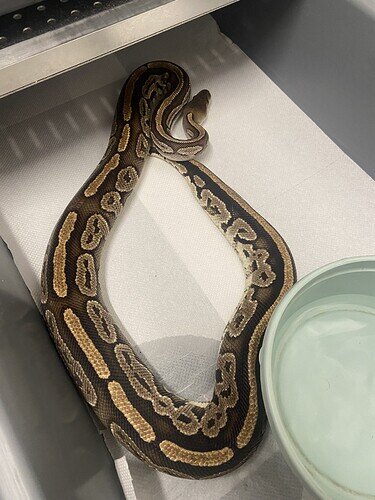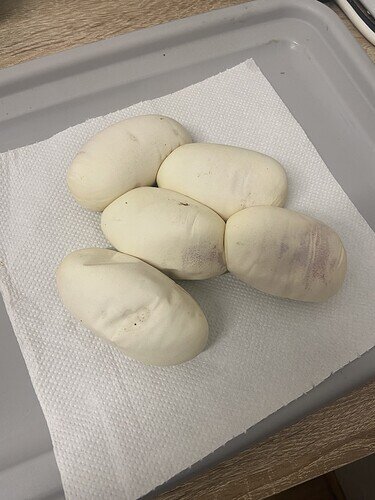Parthenogens are half clones of the mother. Those should all be female double het Albino Pied.
Thanks, that makes sense. I guess that is the only explanation that would make sense based on the results. I appreciate it.
Unfortunately, I will have no less than 20 albinos 100% het Piebald this year.
Also they will be infertile
And most likely short lived.
Are you certain on the infertile comment. I have heard about them having weird clutches results. They seem to be strong so far. I will post if they have problems to keep others informed.
Thanks
Yes it’s very well established partho females live short lives and don’t produce fertile clutches. You should be sure to inform prospective owners they were from a partho clutch. I won’t personally incubate eggs if I know they are from a partho clutch.
Thanks, I appreciate it. I would never mislead anyone to make a quick buck. Thanks for the support
There is no way this can be a partho clutch. If the mother was a visual Albino Pied then all the babies would have to be Albino Pied as well.
.
.
.
This is not entirely accurate. I know of a few partho females that have produced clutches/litters. They were mostly train wrecks but one of them had an animal that survived long enough to produce her own partho clutch before she expired
This just adds to reasons not to incubate partho clutches imo.
Oh, not saying your decision on that front it incorrect. Just clearing up a bit of info 
This is the first I have personally heard of partho females laying clutches. So I would say the are sub fertile now knowing this information.
Correct, any heterozygous genes will either become homozygous or none (inherent the morph gene or the 'normal ’ gene)
Hi. Older post, but ill try. I see you write “survived long enough to produce her own partho clutch before she expired”. Will a partho girl only produce partho clutch if she at all produce? or can the partho girl produce like a normal ballpython “should” do? What about the offspring if those survive?
Partho females have bred out normally and that is the most likely outcome. Warren just had one weirdo partho that also went partho
Thanks for reply.
The offspring from the partho girl, is there any sign of “defects” there?
Will they live as normal? If you have any info on that.
I experienced partho offspring for the first time this year and wonder if there is any point in breeding them. Two visual clown ball pythons.
Hello,
I had a parthenogenesis clutch from my Bongo last months, she hasn’t seen a male from 2021. My knowledge are the same, I mean the female reply herself in super form, but I can confirm this at the end of next month.
The trend points to most parthenogens having shorter lifespans, generally tending to crash out between 3-6 years old. They also tend to grow slower and stay smaller
Talking to Nick Mutton at the last Hillsboro show he said he’s also noticed that partho hatchlings usually don’t absorb their entire yolk, and take longer thab normal to emerge once they pip.
Also the hatclings from a partho girl? say if those dont end up as a partho clutch. Will they live more normal?
3-6 years is enough to breed in some situations especially where they are the only species of the snake in the area or less other predators… (accepting the odd few and lesser numbers of males.)
Just a random idea, but would the smaller size help populating new small islands due to the less nutritional needs and a smaller environment?. or isn’t that passed on. Or would the smaller size be lost over time?
Just thinking about some species of animals that drift to islands and colonise but remain smaller.
Or is it a selective breeding thing, where smaller means less nutrition needs and so the smaller ones become the dominant form. does parthenogens play a part?

